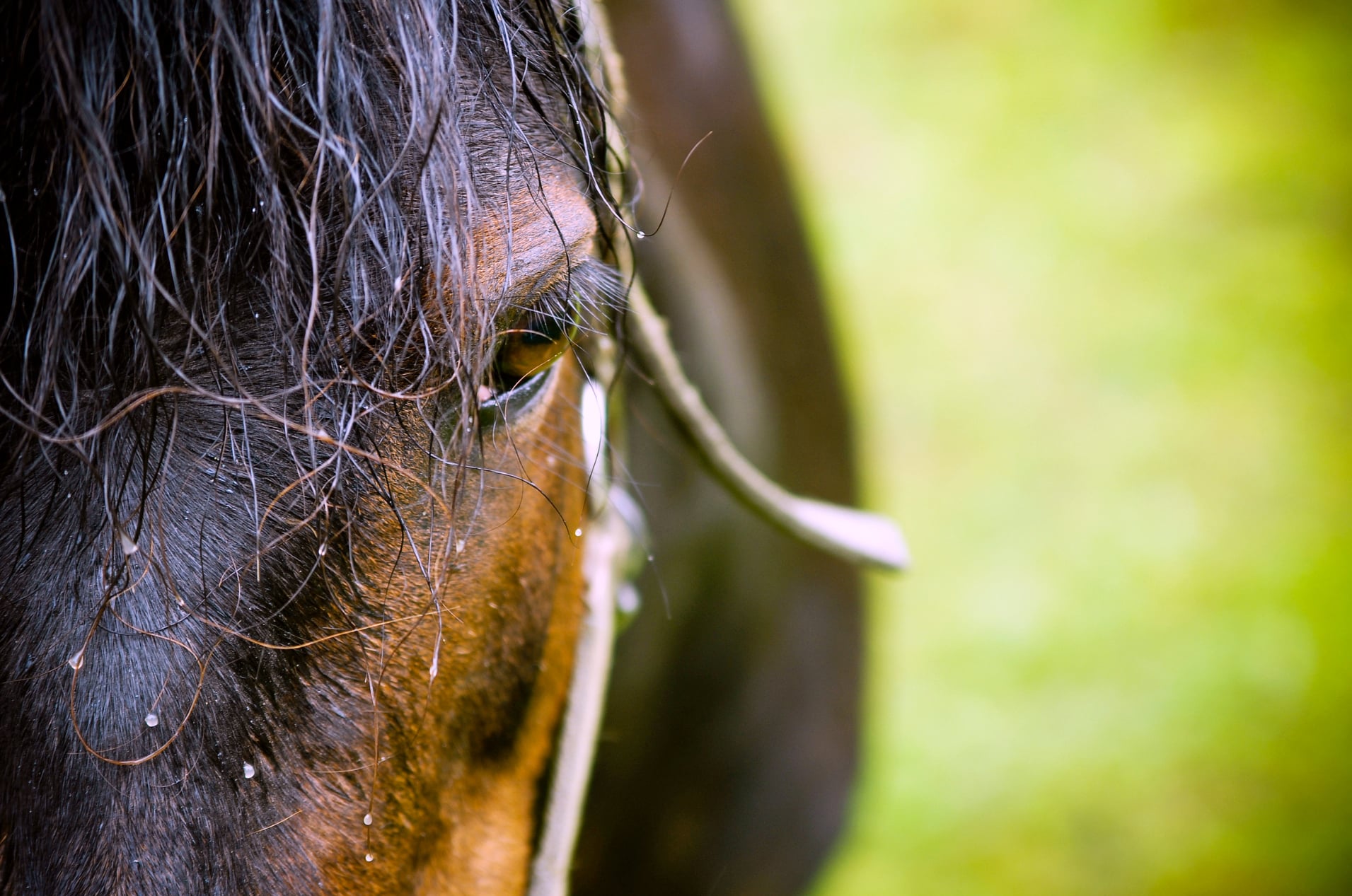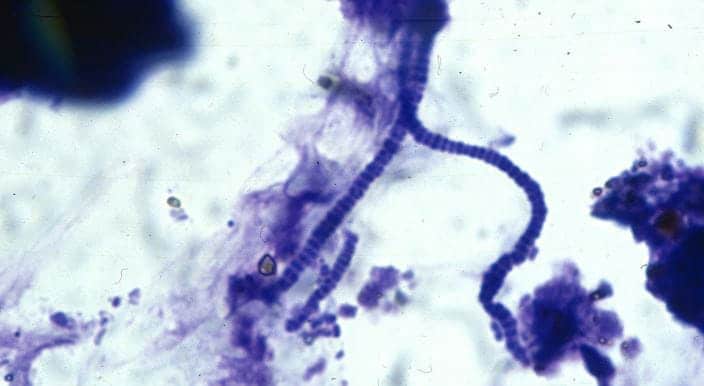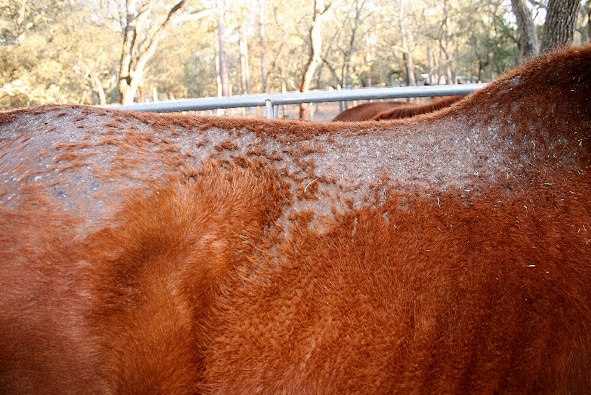
Rain, humidity and skin health
Rain, heat and humidity – the perfect storm when it comes to horses and skin conditions. Dr CAROLINE SPELTA looks at some common problems.
Along with the wet, hot, humid weather many parts of Australia have been experiencing in the past few months, comes the potential for problems with our horses’ skin health. Some of the ailments these environmental conditions favour are contagious, others are not, but as with any health condition, they all need to be taken seriously and treated appropriately.
Rain scald
Dematophilosis, more commonly known as rain scald, is the skin infection caused by Dermatophilus congolensis, a bacteria that is in its element in warm, wet conditions. The infection earned the label rain scald due to its appearance, which is similar to the way horses’ coats look after they’ve been out in the rain. The infection even spreads in much the same pattern as water runoff on a horse’s coat.
The classic rain scald lesions show up as scabbing and crusting of the hair into clumps a few millimetres above the skin. Commonly found over the back and rump (where water doesn’t drain away as easily) it can also affect the neck and extend down the legs and flanks.
Diagnosis: A diagnosis is based on the appearance of the skin lesions, which is then confirmed with impression smears of the underside of the scabs. The moist, dark environment under the scab is where the bacteria is living, and although the infection can appear on more than one horse at the same time, it is not considered to be truly contagious. Rather, it’s just that all the horses in that geographical area are likely to be experiencing the same environmental conditions, which are, of course, detrimental to the health of their skin.
Treatment: Treatment involves the removal of the scabs followed by the application of a medicated shampoo. Sometimes this is easier said than done, because even the very gentle removal of the scabs with a soft grooming brush can be painful for the horse. Nonetheless, all the scabs need to be taken off. If some remain, the infection will continue to reoccur. If scab removal is difficult and painful for your horse, please talk to your veterinarian about pain relief options.
A medicated shampoo that contains chlorhexidine +/- miconazole works well to remove the infection. Other options are iodine-based rinses, but they can be drying on thin coated horses. Systemic antibiotics are very rarely ever needed, and usually only in immunocompromised foals.

Ringworm
Another skin condition, which is often confused with rain scald, is Dermatophytosis (ringworm). However, there is a significant point of difference in that ringworm, unlike rain scald, is contagious. It can be spread between horses through grooming tools, tack, and their handlers. Humans can also contract the infection from their horses.
The infection is usually self-limiting but can be a more serious issue in horses that are stressed, undernourished or immunocompromised.
Symptoms: The lesion presents as the classic ever-expanding ring of inflammation. The infection heals from the centre of the ring out, so large rings can have normal hair growth in the middle of them. They can appear anywhere on the skin, but most commonly in areas where the infection first occurred, for example under the girth if contaminated tack was the source.
The incubation period (the time from initial infection to showing clinical signs) is several weeks. This makes controlling an outbreak difficult, because by the time the first signs of infection have appeared, it’s very likely that other horses will have been infected.

Treatment: The infection usually resolves on its own within one to six months. However, it should be treated to prevent other horses and staff becoming infected. A twice weekly medicated anti-fungal shampoo or rinse is recommended. If you are unsure of the best products to use, ask your veterinarian for advice.
Staphylococcal Pyoderma
Staphylococcal pyoderma (pyoderma refers skin infections that can manifest as spots and bald patches) is the other common bacterial skin disease in horses and causes a superficial pyoderma. The Staphylococcal infection can have a rosette appearance which is easily confused with ringworm, or it can appear as areas of pustules and crusting similar to rain scald.
Staphylococcal infections tend to be itchier than either rain scald or ring worm infections. Infections can be found anywhere on the horse but are commonly found on the legs, especially the pasterns. Staphylococcus spp. is a common normal skin bacteria on horses. Infection occurs in hot humid environments when there is a break in the skin – either from fly bites; soft, macerated skin (water related skin damage) on the legs caused by standing for long periods of time in dams; or from other scratches or minor injuries. Although it is not common, the infection can become a cellulitis resulting in a systemically ill horse with a swollen, painful leg.
Diagnosis: Staphylococcal infections are not contagious. Confirmation of the infection is based on cytology of the crusts and pustules, and culture and sensitivity results.
Treatment: Treatment is with medicated shampoos combined with removal of the scabs. However, systemic antibiotics are often needed to affect a cure, so a consultation with your veterinarian will be necessary.
Visit Apiam Animal Health to learn more about their extensive range of services.



